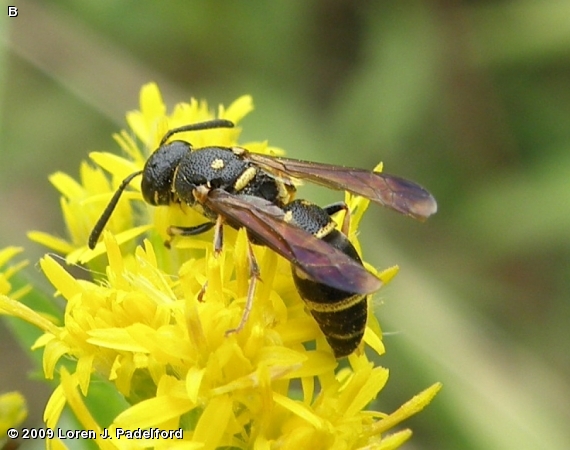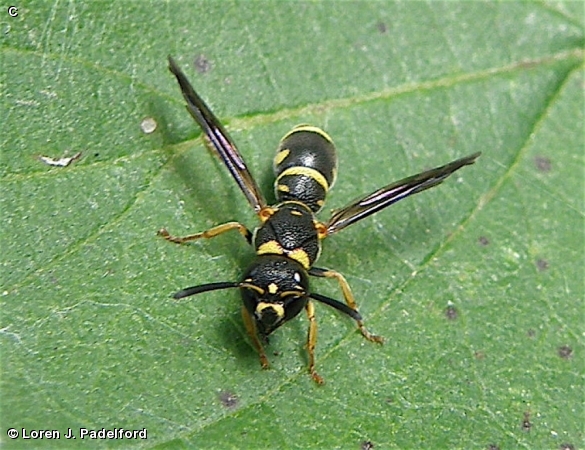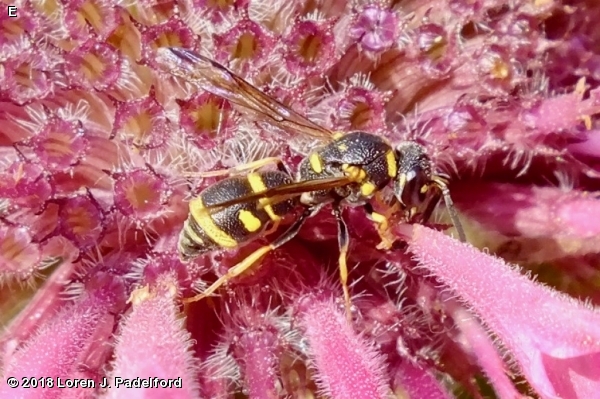
This mason wasp is approximately 1/2 inch in length. The head is black with 3 small yellow marks on the forehead. The antennae are black except for a yellow base. The clypeus is entirely yellow on the male, and the female has just a yellow rim around the top. There is a yellow collar between the head and the top of the thorax. There are yellow markings on the sides and a yellow spot on the dorsal side of the thorax. The abdomen is black with yellow spots on the side of tergum 1 and tergum 2. There are yellow bands at the front and rear of the abdomen. The wings are blue-black. The legs are mostly yellow. There are several look-alike Parancistrocerus species. This wasp was identified with the help of Dr. Matthias Buck, a volunteer expert with the BugGuide website.
This wasp is considered to be uncommon in its range from Nebraska and Kansas eastward. It has been photographed three times in Fontenelle Forest, most recently in July 2018 in the wetlands butterfly garden. It has been seen along the Wetlands boardwalk in July and early August.
All species in this genus have an acarinarium (mite chamber) in the space between the base of Tergum 2 and the posterior overhang of Tergum 1 which is used to carry symbiotic mites. Mason wasp females usually mate just once as they emerge from their nests as newly adult wasps. These wasps are caterpillar hunters.
The content of NatureSearch is provided by dedicated volunteer Naturalists of Fontenelle Forest who strive to provide the most accurate information available. Contributors of the images retain their copyrights. The point of contact for this page is: Loren Padelford.




